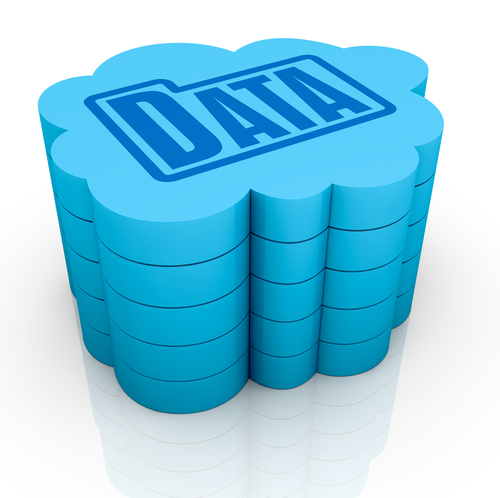October 16th, 2013

Cloud computing has been hailed as a great innovation that changes the way we do business. It’s not without its flaws, however. There have been a number of well-publicized exploits of public cloud systems over the past few months. Tom Scearce, of Data in Motion, suggests that, while storing some files in the cloud is a great idea, there are a few types of files that aren’t worth the risk.
- Financial and Legal Information
Many businesses store tax records or bank account information in the cloud because it’s always accessible, but doesn’t take up storage space on a physical drive or server. What happens, though, when a hacker is able to access the cloud? Suddenly, your most critical documents are available to a third party. Despite the supposed advantages, storing this type of information on a public cloud is ill-advised.
Security experts advise you to create a strong, unique password for each of your online accounts. That adds up to more passwords than most can remember. Storing your password on the cloud seems like a great solution, but once again, the lack of security could give a criminal access to all of your accounts. Even LastPass, which is hailed as the industry standard password manager, has experienced exploits.
- Employee and Customer Data
Your human resources department has collected social security numbers, tax and financial information from your employees. You’ve also collected credit card numbers from customers. Where should you store all of this information? If you decide to keep it on a public cloud, you’re asking for trouble. While losing control of this data might not directly impact your business, there are liability and credibility issues at stake.
- Presentations and other Time Sensitive Files
The other concern, besides security, with the cloud is availability. One of its advantages is the ability to access and share files from anywhere with an internet connection. There are outages and downtime, however. If there’s a file you absolutely have to have at a certain time, it’s best to keep it off the cloud.
There are other options available for these and other types of files that aren’t a good fit for cloud storage. Rather than using public cloud services like Dropbox and Google Drive, consider investing in a private cloud. Not only will that improve security, but you’ll also be able to directly contact your hosting company if there’s any downtime.
Geek Rescue offers a variety of cloud based solutions. Call us to find out how cloud computing can help you do business better.
October 9th, 2013

Protecting your privacy when you surf the web is important. The NSA made headlines by invading internet users’ privacy, but they’re not the only ones trying to find out what you do online. There’s valuable data to be had for hackers, but advertisers are also interested in your search history and activity. Ian Paul, of InfoWorld, suggests three ways to protect your online privacy.
If you’re using public WiFi, you shouldn’t be accessing your bank account or any other online account you wouldn’t want another person to have access to. Free WiFi is fine for surfing public web sites and reading the news. For anything more substantial, you should wait until you’re on a protected network. If that’s not possible, think about investing in a virtual private network, or VPN. When using a VPN, the only information others can see is that you’re connected to the VPN. That even includes your internet service provider. Some VPN’s monitor your activity themselves, however, so do a little research before signing up .
- Use the cloud judiciously
Public cloud services like Dropbox and Google Drive are extremely helpful. You need to be careful about what you store and share there, however. These are public clouds, which means the data you’re storing is unencrypted. Anyone who breaks into your account will have access to everything you have stored on the cloud. Instead, consider using a private, encrypted cloud for your most sensitive data. One way is to encrypt your files before putting them on a public cloud, but a better option is to invest in a service with built in encryption.
Using a strong, unique password is a good way to protect all of your accounts online. It doesn’t make them hacker-proof, however. Many online accounts are offering 2-factor authentication, which makes it much more difficult for anyone else to access your account. To set it up, you’ll request a PIN from Google, Facebook or whoever your account it with. They’ll send it to you by either calling or texting the phone number associated with the account. You then enter that code with your password to verify that you are the owner. Now, only the devices you’ve authenticated in this manner have access to your account.
These techniques help keep you safe online, but no method is foolproof. Cyber criminals are continuously coming up with new ways to steal your information or infiltrate your accounts.
For help improving the security on your devices, call Geek Rescue at 918-369-4335. We not only fix broken and infected devices, we also help you keep them safe.
September 30th, 2013

Running a business involves a seemingly never ending list of tasks that need to be done just to keep the lights on. When you’re inundated with these chores, it’s difficult to find time to create, innovate and improve. That’s why you hire others to do some of these tasks for you.
It’s the same with your IT department. Rather than spend their time on meneal, day-to-day maintenance tasks, consider outsourcing services by using cloud computing and a managed service provider. Patrick Zelten, of Baseline Magazine suggests some things to consider before deciding on outsourcing.
Just because it’s possible to use a managed service to save your company time doesn’t mean it’s the right thing to do. Before making any decisions, think about the day-to-day operations of your business. For any service you’d like to outsource, you need to know how critical it is to you operations. How sensitive is the data shared? Are their advantages to handling this service internally? And, be sure to have a goal for what you hope to accomplish by outsourcing.
- Know your employees capabilities
Another factor in determining what needs to be outsourced is knowing the expertise of your employees. If a system is easily managed by your current staff without being a time burden, then it likely doesn’t need to be managed by a third-party, regardless of other factors. If, however, it will take dedicated time to learning how the system should be run, and keeping up with updates and new functions constantly, then using a managed service provider would save time and money.
- Managed, Co-managed or Cloud
Choosing managed services allows you to retain control. It’s almost like adding additional IT personnel. Applications are divided between you and your managed service provider. The two groups will work closely, which can sometimes lead to problems.
Co-managing is similar, but rather than completely turning over some of your IT tasks, both your staff and the managed service provider work together on the same applications. This provides flexibility, and the ability to easily scale up or down.
Using a cloud system allows you to get started almost immediately and also allows for quick changes in scale. Your cloud provider will handle the set-up and maintenance, so the services you outsource will be continuously updated. This model is less secure than others, however, so what you choose to put in the cloud should be a careful decision.
Outsourcing the right services and applications takes the strain off your company. For help deciding which model is right for you and what the cloud or managed services will do, contact Geek Rescue at 918-369-4335.
September 26th, 2013

Using a cloud system to store and share files has become a common business practice. The cloud makes data available from practically anywhere and makes it easy for employees to collaborate on projects. However, not enough attention is being paid to the security of these clouds and who could potentially have access to valuable information.
Yorghen Edholm writes on his ComputerWorld blog that these security issues are of a particular concern when employees use a public cloud. Services like Google Drive and Dropbox are easy to use and have free options. They present a security risk, however.
It’s not necessarily these public clouds themselves that pose the problem, although they aren’t nearly as secure as private cloud options. The real problem stems from employees using public clouds without supervision from superiors or the IT team. That means others are unaware of potential risks and unprepared to solve problems.
Many employees use a public cloud because it’s convenient. They may be planning to temporarily store a file, or quickly share it with other team members. Usually, they lose track of exactly what is being shared and believe that they’ve only added files to the public cloud that don’t contain any potentially damaging information.
There’s also a concern over who exactly will have access to a public cloud. Recent headlines have enlightened the public about the government being able to snoop on files stored this way. Storing your data more securely doesn’t necessarily restrict the government’s access, but at least you’ll be able to keep track of what they’ve seen.
It may not be possible to keep every piece of data stored privately. But, you should strive to gain oversight of all the data being shared, and how it’s being shared.
For help implementing a cloud computing system at your business, or to enhance security, contact Geek Rescue at 918-369-4335.
September 18th, 2013

Cloud computing is vital to business for storage, security, disaster recovery and continuity. As many as 90-percent of companies have adopted some sort of cloud service and many of those use multiple cloud models.
David Deans, of Business Technology Roundtable, explains how the reliance on cloud computing is changing e-commerce business. This change comes with inherent challenges.
This refers to IT and the rest of your business not being connected. Your business may have needs that IT doesn’t yet know about and those needs may be addressed by adopting a new cloud technology before consulting with IT. This results in security concerns, redundancies and incompatibility. With cloud computing, communication across all departments is more vital than ever.
Shockingly, a number of businesses fail to adequately track the cost of their IT usage. Usage costs, training of staff members and upgrades to networks all contribute to a price tag that ends up much higher than expected. When implementing any new technology into your business, cloud systems included, it’s important to budget and track costs closely.
- Transforming Set Practices
A cloud system allows your business to run differently than it ever has before, but sometimes old habits die hard. Many professionals report that altering existing policies is an even greater challenge than integrating the new technology.
There are a number of benefits to adding cloud computing to your IT infrastructure, but as with any change to your business, there are challenges as well.
For help integrating a cloud into your business, contact Geek Rescue at 918-369-4335.
September 17th, 2013

With the impending release of Apple’s latest version of their operating system, iOS7, users will be prompted to upgrade their phone to gain access to new features. The release of new operating systems usually is synonymous with the addition of bugs and issues. Samantha Murphy Kelly, of Mashable, writes that before you upgrade, you should back-up all of your data.
There are already some users who have gained access to iOS7 and have reported no problems. However, it’s a good idea to back-up your phone periodically and ahead of a major update is a great time for some piece of mind. This way, you aren’t risking anything by upgrading.
If you’re currently using iOS5 or iOS6, your iPhone will automatically back-up data to the iCloud, but you must first enable this feature. To do that, go to ‘Settings’, select ‘iCloud’ and then ‘Backup & Storage’. Once you’ve done this, your iPhone will back up your data daily, as long as it’s plugged in and connected to WiFi with the screen locked.
Even with this option enabled, you’ll want to back up manually before upgrading your OS. By following the same steps as before, but selecting ‘Back Up Now’ your phone will back up your data right then and there. It’s a lengthy process so be prepared and the more data you have, the longer it will take.
One other issue you should resolve before updating to iOS7 is clearing some storage space. You’ll need space to update, so go ahead and get rid of seldom used apps, old photos and music you no longer want.
If you end up losing some of your data, call Geek Rescue. We have the tools needed to recover data for nearly any device. We also fix broken gadgets and get rid of viruses and malware infections. Call us at 918-369-4335 or come by Geek Rescue.
September 12th, 2013

Cloud computing has a practically endless list of capabilities, but perhaps the most useful is the cloud’s mobility. Sam Narisi, of IT Manager Daily, published ways your remote workers should use the cloud to increase productivity and collaboration.
If you have remote workers spread across the country, a video conference call introduces unfamiliar faces to each other and brings the team closer together. Even if your employees are all in-house, you may need a conference call with a client, an employee working from home or a team on the road. The cloud makes it easy to connect with anyone, regardless of where they may be. A bonus is that those remote employees will be able to access files and applications needed to enhance their contributions to the conversation.
Sometimes, you need more than a conversation with remote employees or clients. That’s why some cloud based services offer tools like collaborative virtual whiteboards and message boards. This simplifies communication beyond normal email and leaves printed evidence of what’s been said, unlike phone conversations or video conferencing. The whiteboard feature allows users to draw out ideas and other users to add on or erase.
A cloud system is great for off-site back-up and data storage. In the context of mobile access, however, storage refers to the ability of the remote workers to access and collaborate on files stored in the cloud. Documents, spreadsheets and even presentations can be shared between team members and worked on together. Not only does this make the process more efficient, but it ensures that employees will always have access to the files they need, when they need them.
The cloud offers business solutions for nearly every industry. To find out how cloud computing will help your business, contact Geek Rescue at 918-369-4335.
September 10th, 2013

You’ve no doubt heard the term cloud computing, but did you know now all cloud services are created equal? Infrastructure as a Service, Software as a Service and Platform as a Service all incorporate cloud technology, but offer different advantages.
Gil Allouche, of IT Manager Daily, broke down the difference between these common cloud computing models and explained how businesses use them.
- Infrastructure as a Service
This is almost like outsourcing your IT department. IaaS puts storage, networking and raw computing into the cloud. An outside provider would then manage for running the system and maintenance. Operating systems and applications are then added by your business.
PaaS offers the ability to use operating systems online and rent hardware and storage. Your business is able run applications in the cloud, which makes them accessible by employees from virtually anywhere. Features of operating systems and applications running on PaaS are easily upgraded or altered.
In this model, the cloud provider would manage the software your company needs and you would pay for subscriptions for the number of users you need. With SaaS, the maintenance and installation of software is done for you, which frees up space and time for your own IT infrastructure. Updates are quick and easy and the software is scalable to fit the demands of that moment. An example is Microsoft Office 365. Rather than installing Office 365 on each individual computer at your place of business, you would sign up for SaaS and an outside provider would keep you constantly updated and running smoothly.
As you can see, while there are similarities between cloud models, the services offered are different. Cloud computing is incredibly variable and can be used in an almost endless number of possible ways.
To find out what cloud computing offers your business, contact Geek Rescue at 918-369-4335. We have cloud solutions for every industry and will help you discover how cloud computing makes you more efficient.
August 29th, 2013

What would happen if you lost everything that is currently being stored on your Android device? You may initially think it wouldn’t be a big deal because you don’t have any vital or valuable data stored on your smartphone or tablet, but consider how much personal value is stored there.
Pictures, videos, text messages, contact information and potentially much more information that isn’t available anywhere else would be lost if something happened to your smartphone or tablet. Geek Rescue is often able to restore previously lost information from broken devices, but in some cases the information is lost forever. That’s why you should always have a back-up plan.
Jill Duffy, of PC Mag, describes how to back up your Android device in case the worst scenario plays out. She accurately points out “the key to backing up is redundancy”, which means you should have important information saved in multiple places.
- Copy the SD card to your PC
This is the first step because it’s the easiest, most complete and it’s free. You’ll want to go through your device and make sure everything you want to back up is saved to your SD card, and not just to your hard drive. Once you connect your device to your PC with a USB cable, you’ll be able to copy everything from your SD card to a folder on your PC. You’ll want to make a note of the date you made this back-up and try to keep it updated as much as possible.
- Automated back up in the cloud
There are a number of apps to help you keep your data backed up regularly. These usually cost money for the apps themselves, and sometimes charge a regular fee for storage space. The upside is it takes minimal effort to back-up your data and it is regularly scheduled in advance so you always have an up-to-date copy of your information.
The previous two methods don’t create back-ups of your text messages. If you’re the type that regularly wipes out all of their text messages, then you won’t have a need to back them up. If you’re the more sentimental type, however, you might want a record of your texts. There are a number of paid third-party apps that make this process simple. You’ll be able to save texts to your Gmail account, or to the cloud.
Again, the more copies you have saved and the more places you save them, the better off you’ll be in case of disaster. This article applies specifically to Android devices, but remains true for any device you use to store information that holds value to you.
For help with data storage, back-ups, or to recover lost data, contact Geek Rescue at 918-369-4335.
August 28th, 2013

Bring your own device, or BYOD, is a growing trend in business. It refers to employees using their own devices, like smartphones and tablets, to access their company’s network and make their jobs easier. This becomes a problem in terms of security.
As Anders Lofgren writes for All Things Digital, an estimated 80-percent of employees are already bringing their devices to the office but many employers aren’t embracing this trend. This doesn’t mean that workers will stop using their smartphones to check their work email. It does mean that they’ll be doing so in an unsecured manner.
The threat of data being lost is exponentially higher when there are no security mandates on employees devices. Just by password protecting a smartphone, you greatly reduce your risk. There’s also a need to ensure that any device accessing your network has adequate security software installed.
Beyond adapting to the growing BYOD trend, you should also have an eye on what’s ahead.
Bring your own cloud, or BYOC, is another employee habit companies must plan for. Using Dropbox, Google Drive or other public cloud services makes an employee’s job simpler, but there are a number of security concerns.
If you allow individuals to bring their own device to work, what happens when they leave the company? Take your own device, or TYOD, refers to the policy of remotely wiping a former employees device of any sensitive data specific to your company. Currently, less than a quarter of all businesses have a policy to ensure former employees don’t still have sensitive data on their personal devices.
Compatibility issues also become a major problem when employees bring their own devices. Many will have iPhones or iPads, which may not be immediately compatible with your companies software choices.
To lock down your security in the face of the BYOD trend, call Geek Rescue at 918-369-4335. We solve compatibility issues, close gaps in security and offer solutions to keep your business running efficiently.




















